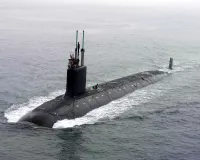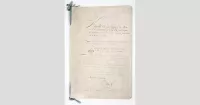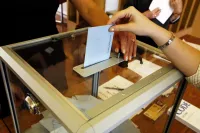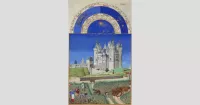Martinique, an island in the Caribbean's Lesser Antilles, is an overseas department and region of France. It holds single territorial collectivity status within the French Republic and is integrated into the European Union as an outermost region. While part of the European Economic Area and an associate member of CARICOM, Martinique is not included in the Schengen Area or the European Union Customs Union. The euro is the official currency.
May 1902: Eruption of Mount Pelée
In May 1902, Mount Pelée, a volcano in Martinique, erupted, resulting in the destruction of the city of Saint-Pierre and the deaths of 28,000 people in a matter of minutes.
August 1902: Second Eruption of Mount Pelée
A second eruption of Mount Pelée occurred in August 1902, causing further devastation. This eruption resulted in the loss of approximately 1,100 lives, primarily in the towns of Le Morne-Rouge and Ajoupa-Bouillon.
1942: Battle of the Caribbean
During 1942, the Battle of the Caribbean saw German U-boats utilizing Martinique as a refueling and resupply point, leading to the sinking of 182 ships.
July 1943: Liberation of Martinique
On July 14, 1943, Free French forces liberated Martinique from the control of the pro-Nazi Vichy government.
1944: Decline of U-boat Activity
By 1944, the Battle of the Caribbean saw a significant decline in German U-boat activity, with only five ships sunk.
1946: Martinique's Integration into France
In 1946, Martinique was fully integrated into France, which led to French becoming the official language.
1946: Martinique Becomes an Overseas Department
Martinique officially became an Overseas Department of France in 1946 following a unanimous vote by the French National Assembly.
December 1959: Martinique Riots
In December 1959, Martinique experienced riots sparked by a racially charged incident between two motorists, resulting in three deaths. This event highlighted racial tensions and fueled the movement for independence.
1962: Formation of OJAM
The OJAM (Organisation de la jeunesse anticolonialiste de la Martinique), a pro-independence group, was formed in 1962 amidst rising global anti-colonial sentiment and local tensions.
1972: Chlordecone Use Authorized
The use of chlordecone was authorized in Martinique's banana plantations between 1972 and 1993.
1974: Striking Banana Workers Killed
In 1974, tensions escalated when two striking banana workers were shot and killed by gendarmes, further fueling the independence movement.
1979: Hurricanes Damage Martinique's Economy
The year 1979 marked the beginning of a series of hurricanes that severely impacted Martinique's agricultural output, contributing to economic struggles and a decline in the independence movement.
1982: Speaking Creole in Schools Forbidden
Prior to 1982, speaking Creole in public schools was prohibited, discouraging its use in Martinique.
1993: Ban on Chlordecone Pesticide
In 1993, Martinique banned the use of chlordecone, a pesticide used in banana cultivation. The ban came after the discovery of widespread contamination of farmland, rivers, and fish, which had detrimental effects on the health of the islanders.
1993: Lack of Information on Chlordecone Dangers
The lack of information provided to the Martinican population about chlordecone's dangers between 1993 and 2004 is a significant concern regarding the "Chlordecone Scandal."
1993: Chlordecone Use Banned
The use of chlordecone in Martinique's banana plantations was banned in 1993.
2000: Pineapple Production Value
In 2000, pineapple production in Martinique was valued at €7.9 million.
February 2001: KAPES KREYOL is Created
In February 2001, the KAPES KREYOL exam debuted, allowing for Creole teachers to teach in secondary school.
March 2003: Constitutional Revision Offers Options
A constitutional revision in March 2003 presented Martinique with four options for its future status.
December 2003: Referendum on Institutional Merger
A referendum held in December 2003 proposed merging Martinique's regional and departmental institutions. The proposal was rejected, with 50.48% voting against it.
2004: Concerns Over Chlordecone Transparency
Concerns about the lack of transparency regarding chlordecone's dangers continued until at least 2004, raising concerns about the handling of the issue.
2005: Decline in Pineapple Production
By 2005, pineapple production in Martinique experienced a significant decline, accounting for a mere 1% of the total agricultural production value, which amounted to €2.5 million, a stark contrast to the €7.9 million recorded in 2000.
2005: Significance of Rum Production
By 2005, rum production, particularly agricultural rum, contributed to 23% of Martinique's agri-food value. The industry provided employment for 380 people on the island, showcasing its economic importance.
February 2006: Complaint Filed Against Chlordecone Use
On February 23, 2006, a complaint was filed concerning the life-endangering use of chlordecone in Martinique, leading to protests years later regarding its potential statute of limitations.
2006: Banana Cultivation in Martinique
As of 2006, banana cultivation was a significant agricultural activity in Martinique, covering over 7,200 hectares and producing nearly 220,000 tons of bananas. The industry supported approximately 12,000 jobs, both directly and indirectly.
2006: Civil Complaint Filed Against Chlordecone Use
Associations from Martinique and Guadeloupe filed a civil complaint in 2006 in response to the long-term environmental and health impacts of government-authorized chlordecone use.
April 2008: Decree on Intermittent Energies Management
In April 2008, a decree addressed managing intermittent energies like wind and solar power, allowing for disconnection from the grid if production exceeds 30% of injected power without storage.
December 2008: Congress Supports Article 74
During a congress in December 2008, thirty-three pro-independence elected representatives from Martinique's departmental and regional assemblies voted in favor of changing the island's status based on Article 74 of the French Constitution, seeking greater autonomy.
2008: Action Plans to Address Chlordecone
Since 2008, France has developed action plans to protect Martinique's population from chlordecone's effects, raise awareness, and support agriculture and fisheries.
2008: Chlordecone Plans Launched
Three "Chlordecone Plans" were launched by the French state since 2008 to address the impacts of the chemical's use.
August 2009: Grenelle I Law Sets Renewable Energy Targets
The Grenelle I Law, passed in August 2009, set targets for Martinique to achieve 50% renewable energy by 2020 and energy autonomy by 2030.
2009: French Caribbean General Strikes
In 2009, Martinique experienced significant unrest during the French Caribbean general strikes, initially sparked by cost-of-living concerns. The movement evolved to encompass racial dimensions, challenging the economic dominance of the Béké.
2009: Martinique's Rum Production
In 2009, Martinique produced around 90,000 hl of pure alcohol, with a significant portion, 79,116 hl, attributed to agricultural rum. This output highlighted the island's capacity for rum production.
2009: Sugarcane Cultivation in Martinique
In 2009, sugarcane cultivation in Martinique occupied 4,150 hectares, representing 13.7% of the agricultural land. The total production reached approximately 220,000 tons, with a portion allocated for sugar production and the remainder supplied to agricultural rum distilleries.
January 2010: Article 74 Rejected in Referendum
A referendum held on January 10, 2010, resulted in the rejection of the proposed change in status based on Article 74, with 79.3% of the population voting against it.
January 2010: Referendum on Article 74
On January 10, 2010, a referendum was held to determine if Martinique should transition to the regime outlined in Article 74 of the Constitution, allowing for autonomy. The majority, 79.3%, voted against the change.
January 2010: Martinique Referendum on Autonomy
On January 24, 2010, Martinique held a referendum in which residents voted to become a "special (unique) collectivity" within the French Republic, replacing the General Council and regional council with a single council.
2010: Regional Health Agency Established
A regional health agency, Agence régionale de santé Martinique, was established in 2010 to implement French health policies in the territory.
January 2011: Government Approves Bill
The French Government approved a bill in January 2011, concerning the territorial communities of French Guiana and Martinique.
July 2011: Law on Territorial Communities Adopted
In July 2011, Law No. 2011-884 was adopted, addressing the territorial communities of French Guiana and Martinique.
2012: Modernization of Port of Fort-de-France
Following the French government's decision to modernize national port infrastructures, the Port of Fort-de-France, Martinique's primary port, underwent significant modernization in 2012 and was designated as the Grand Port Maritime (GPM) of Martinique.
2013: Population Decline in Martinique
Starting in 2013, Martinique experienced a population decline of 0.9% annually.
December 2014: Establishment of "Martinique Transport"
In December 2014, "Martinique Transport" was established as a public entity responsible for managing various modes of transportation on the island. This included urban and intercity passenger transport (including taxis), maritime transportation, school transportation, transportation for disabled students, as well as the bus network.
2015: Martinique Aimé Césaire International Airport Passenger Traffic
In 2015, Martinique Aimé Césaire International Airport handled 1,696,071 passengers, making it the thirteenth busiest airport in France.
2015: Martinique's Imports
In 2015, Martinique imported goods and services worth €3,038 million. A significant portion, around 40%, of these imports consisted of crude and refined petroleum products.
2015: Cantons Abolished
Martinique abolished its system of 45 cantons in 2015.
2015: Martinique Surf Pro Launched
The Martinique Surf Pro, an international surfing competition, was created in 2015, becoming the only Caribbean event in the World Surf League.
June 2017: Election of Deputies to the National Assembly
Martinique elected four deputies (Serge Letchimy, Jean-Philippe Nilor, Josette Manin, and Manuéla Kéclard-Mondésir) to represent the island in the National Assembly in June 2017.
September 2017: Election of Senators
September 2017 marked the election of two senators, Maurice Antiste and Catherine Conconne, to represent Martinique in the Senate.
2017: International Passenger Traffic at Martinique Aimé Césaire International Airport
By 2017, international passenger traffic at Martinique Aimé Césaire International Airport reached 192,244 passengers. However, this traffic was notably limited and showed a declining trend.
January 2018: Martinique's Healthcare Workforce Data
As of January 2018, Martinique had a density of 141 general practitioners, 150 specialists, 53 dentists, 1,156 nurses, and 90 pharmacists per 100,000 people.
August 2018: Launch of Martinique's First Exclusive Right-of-Way Public Transport Line
Martinique's inaugural exclusive right-of-way public transport line commenced operation on August 13, 2018. The line, serviced by high-service-level buses, connected Fort-de-France and Le Lamentin airport. There were plans to extend the line to Schœlcher, Robert, and Ducos in the future.
2018: Flag Competition Annulled
A competition in 2018 aimed at creating a new flag for Martinique was annulled by the local administrative tribunal.
2018: 4G Coverage in Martinique
According to Arcep, Martinique achieved 99% 4G coverage by mid-2018, highlighting significant progress in telecommunications infrastructure.
2019: Parliamentary Commission Reveals Chlordecone Exposure
A French parliamentary commission revealed in 2019 that over 90% of Martinicans were exposed to chlordecone, deeming previous action plans inadequate and recommending further research and prevention measures.
2019: "Parcours Creole +" Bilingual Education Launched
In 2019, "Parcours Creole +" was launched by Académie de la Martinique, promoting bilingual education in French and Martinican Creole.
2019: Martinique's Road Network
In 2019, Martinique had a road network spanning 2,123 km.
2019: Launch of "Kanawa" Submarine Cable
In early 2019, Orange, a telecommunications company, launched "Kanawa," a new submarine cable connecting Martinique to French Guiana. This enhanced connectivity aimed to improve communication infrastructure in the region.
2019: Vehicle Registration in Martinique
Throughout 2019, 19,137 new vehicles were registered in Martinique, demonstrating a significant increase in vehicle purchases within the region.
February 2020: Appointment of Stanislas Cazelles
Stanislas Cazelles was appointed as the Prefect of Martinique in February 2020.
March 2020: First COVID-19 Cases Confirmed
Martinique confirmed its first cases of COVID-19 in March 2020.
May 2020: Appointment of Nicolas Onimus
Nicolas Onimus assumed the role of Sub-prefect of La Trinité / Saint-Pierre in May 2020.
2020: Fourth Chlordecone Plan Scheduled
A fourth "Chlordecone Plan" was scheduled for 2020 to address prevention and research into cleanup methods, based on recommendations from a parliamentary commission.
2020: Planned Entry of Free Mobile Network
Free, a telecommunications company, planned to enter the Martinique market in 2020, partnering with Digicel.
2020: Target for 50% Renewable Energy
Martinique aimed to achieve 50% renewable energy in its final consumption by 2020, as set by the Grenelle I Law.
March 2021: Protest Against Chlordecone Statute of Limitations
On March 27, 2021, thousands of Martinicans protested against the potential statute of limitations on a 2006 complaint concerning the use of chlordecone.
April 2021: Pierre Marie-Joseph Represents Martinique
In April 2021, Pierre Marie-Joseph was appointed as Martinique's representative in the Economic, Social and Environmental Council.
April 2021: Zouk TV Ceases Broadcasting
In April 2021, Zouk TV, a local television channel in Martinique, ceased broadcasting. The plan was to replace it with Zitata TV; however, the launch of the new channel experienced delays due to the COVID-19 pandemic.
May 2021: Justin Daniel Becomes President
Justin Daniel assumed the presidency of the Economic, Social, Environmental, Cultural and Educational Council of Martinique in May 2021.
July 2021: Lucien Saliber Elected Chairman
Lucien Saliber was elected as the Chairman of the Assembly of Martinique in July 2021.
July 2021: Excess Mortality Rate Increases
Martinique experienced a rise in excess mortality from all causes, including COVID-19, starting the week of July 26, 2021.
July 2021: Serge Letchimy Elected President
Serge Letchimy became the President of the Executive Council of Martinique in July 2021.
September 2021: Excess Mortality Recorded Due to COVID-19
By September 2, 2021, Martinique recorded an excess mortality rate due to the COVID-19 pandemic.
2022: Public Vote for New Flag
In 2022, a public vote chose a hummingbird design, but it was withdrawn due to plagiarism allegations, leading to the adoption of the runner-up, the "red-green-black" design.
February 2, 2023: Martinique Adopts New Flag
On February 2, 2023, Martinique adopted a new flag featuring a red triangle, green and black bands, symbolizing the independence movement.
February 2023: Martinique Adopts Activist Flag
Martinique adopted an independent activist flag on February 2, 2023, symbolizing Pan-Africanism with its three colors.
January 2024: Population of Martinique
As of January 2024, Martinique's population stood at 349,925.
2025: Delivery of Landing Craft
The French Navy is scheduled to receive an Engins de Débarquement Amphibie – Standards (EDA-S) landing craft in Martinique by 2025 to enhance operational capabilities in the territory and region.
2030: Energy Autonomy Planned for Martinique
Martinique has planned to achieve energy autonomy by 2030, as part of the Grenelle I Law's provisions.
Mentioned in this timeline

A submarine is a watercraft capable of independent operation underwater...
France officially the French Republic is primarily located in Western...

In Christianity a saint is a person recognized for exceptional...

A constitution serves as the foundational legal document for any...

An election is a structured decision-making process where a population...

September is the ninth month of the year in the...
Trending
1 month ago Newly Built Chinese Bridge Collapses Months After Opening, Raising Safety Concerns
1 month ago Texas A&M Aggies: CFB Playoff Rankings, Lane Kiffin's Defense, and Playoff Picture
2 months ago US Considers Strikes on Venezuela Over Drug Trafficking; Trump Denies Plans
7 months ago Russian Bridges Collapse: Train Derailment Claims Lives Near Ukraine, Leaving Seven Dead
6 months ago NYC Mayoral Race: Brad Lander Gains Momentum with Key Endorsements
6 months ago Brooklyn Center police shot man wielding chainsaw; BCA investigating incident.
Popular

Tucker Carlson is an American conservative political commentator known for...

Candace Owens is an American conservative political commentator and author...

XXXTentacion born Jahseh Dwayne Ricardo Onfroy was a controversial yet...

Ben Shapiro is a prominent American conservative political commentator media...

William Franklin Graham III commonly known as Franklin Graham is...

Bill Gates an American businessman and philanthropist revolutionized personal computing...